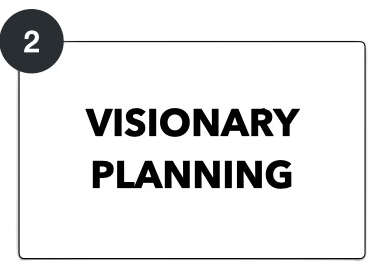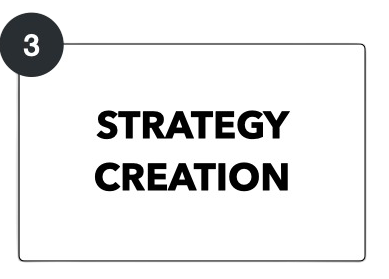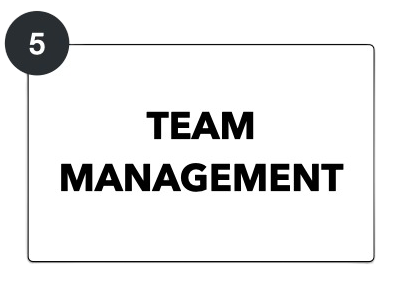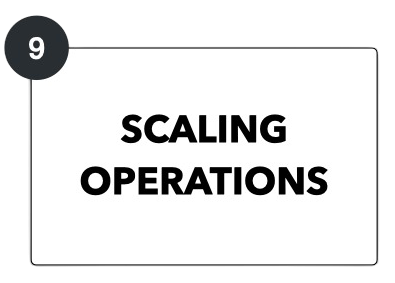Six Hats Method
Get the simple logic we use behind some of our biggest decisions.
Making well-rounded decisions requires viewing challenges from multiple perspectives. By applying different thinking approaches, businesses can address problems more effectively and develop comprehensive solutions.
Six Hats Method:
Fresh Ideas
When optimizing technology strategies, I found that a systematic approach makes all the difference. That’s why I’ve enhanced our process by integrating Edward de Bono's Six Thinking Hats method—a powerful way to tackle challenges and spark deeper insights. Each hat represents a different perspective, allowing us to deeply evaluate each step of the Technology Roadmap.
We assess your current team structures, recommend optimal configurations, and carefully select team members who bring complementary skills and align with your company's vision.
STRUGGLES: What are the top three struggles we might run into?
QUESTIONS: What are the top three questions you might ask about this step?
ACTIONS: What are three action items for this step?
RESULTS: What are the results we will achieve after completing this step?
Here’s how the Six Hats help:
White Hat (Facts & Data) - We gather all the relevant information for each step. This ensures that our strategy is rooted in concrete data, creating a stable foundation for growth.
Red Hat (Intuition & Feelings) - We acknowledge instinctive reactions, both my own and those of the stakeholders. This adds a layer of empathy, allowing us to better understand emotional reactions and address concerns early.
Black Hat (Risks & Difficulties) - This hat is about highlighting potential risks. Here, I dig into the possible challenges—from technology compatibility issues to implementation roadblocks. By preemptively addressing these struggles, we can create contingency plans.
Yellow Hat (Optimism & Benefits) - We explore all the positive opportunities and benefits the technology can bring. This keeps us focused on the rewards ahead, such as improved efficiencies or cost savings. This keeps everyone engaged in our larger goals.
Green Hat (Creativity & New Ideas) - Creativity is at the core of innovation. During this step, I encourage thinking beyond the current constraints. We use this approach to spark new ideas that improve upon the existing plan.
Blue Hat (Process & Control) - Finally, we use the blue hat to manage the thinking process itself. This helps ensure every hat’s perspective has been considered fully before moving forward. We also define specific three action items for this step to maintain momentum and accountability.
The Six Thinking Hats are applied throughout a structured roadmap, which guides our entire process. Here’s an example of how it all comes together:
- -
〰️
- - 〰️
Foundation Phase
1. Team Structure: We start by understanding the team's structure and how they work together. Using the White Hat, we gather all relevant data about team roles and responsibilities. The Black Hat helps us identify potential inefficiencies in team dynamics, while the Yellow Hat keeps us focused on the opportunities for smoother collaboration.
2. Visionary Planning: This is where we craft the future vision. The Red Hat plays a big role here, allowing us to incorporate everyone's emotions and aspirations. The Green Hat is also critical as we brainstorm creative ideas that align with our long-term vision.
3. Strategy Creation: During strategy creation, we need to balance optimism and risks. We use the Yellow Hat to highlight the benefits of our strategy, while the Black Hat ensures we consider potential challenges. We also apply the Blue Hat to make sure the overall process remains organized and on track.
Implementation Phase
4. Systems Mapping: Mapping out the systems involves a detailed look at existing processes and technologies. Here, the White Hat helps gather facts about current systems, while the Green Hat sparks ideas for improvements and new integrations. The Blue Hat ensures we are methodical in documenting the entire process.
5. Team Management: Managing the team effectively requires empathy and understanding. The Red Hat helps us acknowledge team members' feelings and reactions, while the Black Hat helps anticipate any challenges that may arise. We use the Yellow Hat to emphasize the positive outcomes of effective team management.
6. Comms Management: Effective communication is key. We use the White Hat to gather all necessary information, and the Yellow Hat to highlight the benefits of clear communication channels. The Blue Hat ensures we keep communication structured and effective.
Optimization Phase
7. Technology Selection: Selecting the right technology is all about balancing data with creative thinking. The White Hat helps us evaluate the facts about available technology options, while the Green Hat encourages thinking outside the box to find the best fit. The Black Hat helps us weigh any risks or downsides of each option.
8. Contract/Document Management: Managing contracts and documents effectively involves identifying risks and ensuring clarity. The Black Hat is useful here to foresee potential issues, while the Yellow Hat keeps us focused on the benefits of well-organized documentation.
9. Scaling Operations: As we plan to scale, the Yellow Hat helps us see the opportunities for growth, while the Black Hat keeps us aware of the challenges we might face. The Blue Hat ensures we have a clear process for scaling, including defining action items and checkpoints.
- -
〰️
- - 〰️
- -
〰️
- - 〰️
- -
〰️
- - 〰️
- -
〰️
- - 〰️
By applying the Six Thinking Hats, my consulting process now becomes a multi-layered strategic exercise that addresses both the hard data and human elements. Each step of the process is carefully evaluated, allowing me and my clients to get clearer perspectives, preemptively solve issues, and align with a shared vision of success. This structured, yet creative, method ensures that the technology strategy we design is clear, practical, and capable of adapting to future needs.












